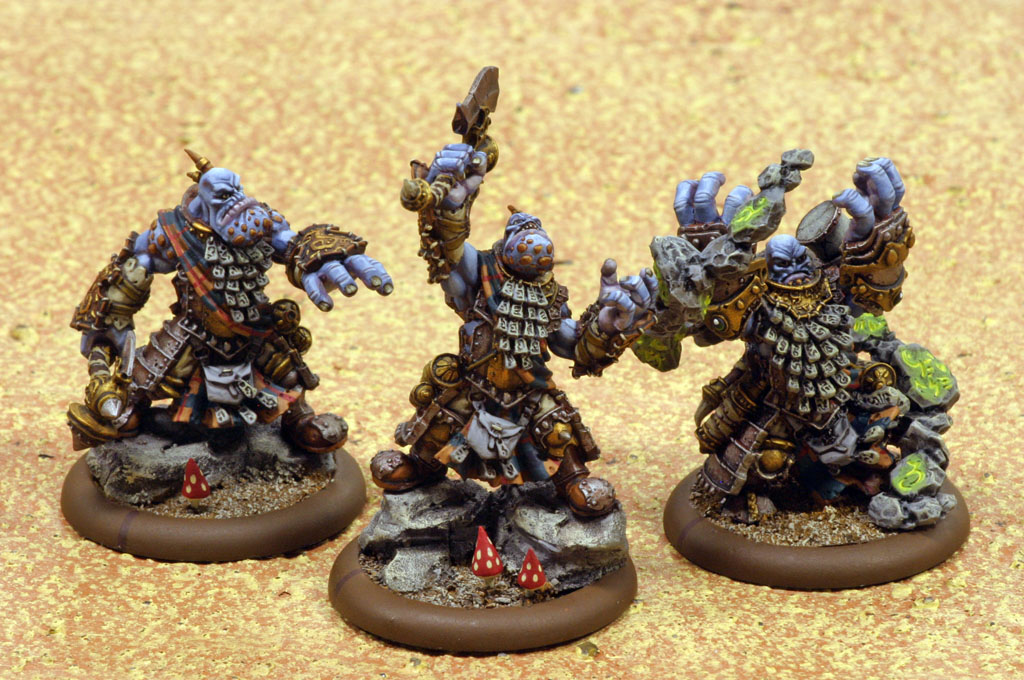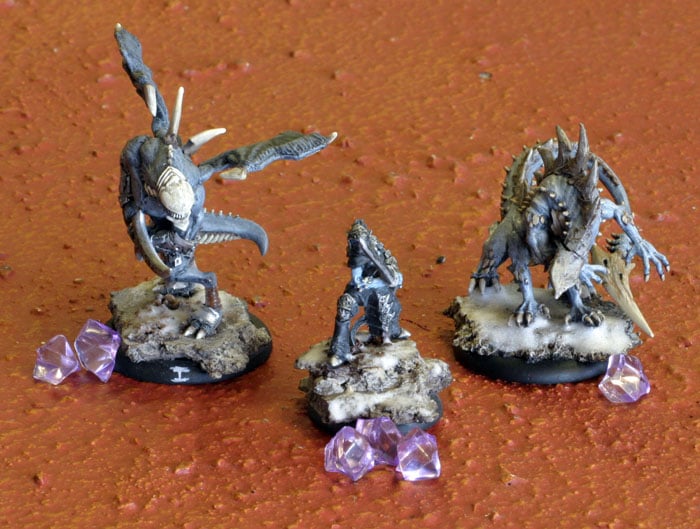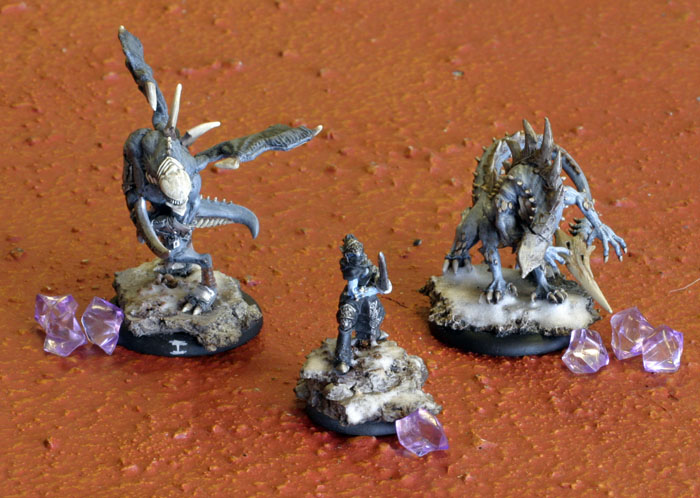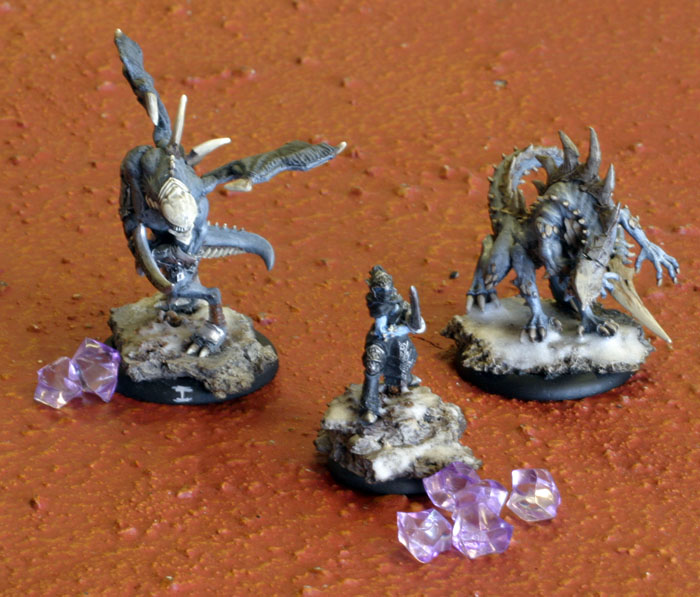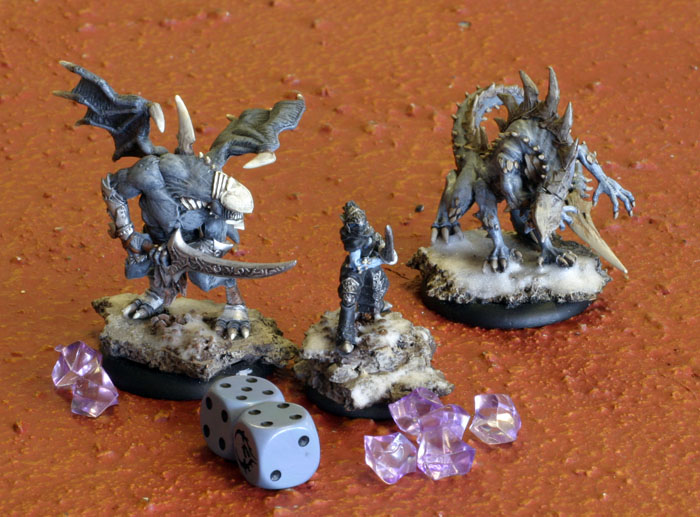Privateer Press: So What Is This Hordes Game Anyway?

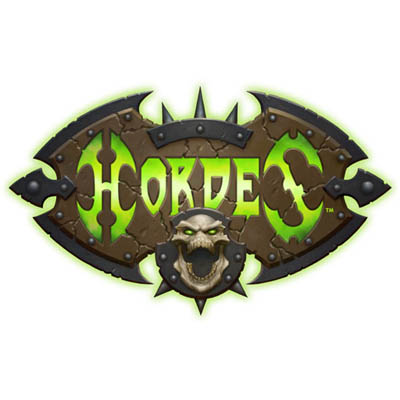
Throughout our Warmachine coverage here on BOLS you’ve probably seen many references to Hordes, the sister game to WM. This article will hopefully clear up the big differences and misconceptions about the two games. The Hordes MkII playtest just wrapped up and the two games are compatible again. The Hordes rulebook will hit store shelves in the summer of 2010 with faction books following soon after.
Hordes is all about the beasts in the wilds. Pissed off Circle druids, invading Skorne, stalwart Trolls, and angry Draconic creations make up the four factions. The armies tend to perform better in terrain than their Warmachine counterparts, and look and act less regimented on the tabletop. We’ll go into much greater detail on the factions in upcoming articles.
Hordes IS FULLY COMPATIBLE with Warmachine. The two games are designed to play together on the same table at the same time and are as balanced against each other as they can be. That means if you’re like me, and prefer a Hordes faction or the Hordes rules to those of Warmachine, you can collect an army and know that you can go anywhere in the world and play. To keep the games compatible, the core rules are 90% identical. All the rules for how units move, how cavalry, unit attachments, and charges work is the same. What’s different is the Fury mechanic.
The infantry units in the Hordes factions perform much the same as those in Warmachine, but Warbeasts are much more flexible than their Warjack counterparts. They are faster, have higher defense on average, often have more base attacks, and many can move through terrain without penalty. They also use Fury instead of Focus. The cost of this increased flexibility is a tendency towards less powerful attacks, less armor, and no Arcnodes; the things in some Warjacks that let your Warcaster channel spells through them to increase the spells’ range. Being a younger game by several years, there are also fewer units in Hordes than in Warmachine, though not by many.
Fury versus Focus
This is the core difference that separates Warmachine and Hordes. As we’ve discussed before, Focus is generated by a Warcaster at the beginning of each player turn and can be allocated to either the Warcaster for spells or to the casters’ Warjacks to allow the ‘Jacks to perform better on the battlefield. At the beginning of the next turn, the Focus resets and can be allocated all over again. This gives Warmachine a resource management element.
Fury is the opposite of Focus. Instead of a Warcaster, Hordes factions have Warlocks. Warlocks start the game with full Fury, but have no ability to generate it themselves. Instead, it is the Warbeasts that create the Fury which the Warlock can then siphon off, or Leech, at the beginning of each turn in order to fuel spells and powers. Fury does not reset, meaning the player must continue to Force his beasts if he wants his Warlock to continue having access to Fury. Think of it as a Warbeast literally creating its own Fury whenever it charges, boosts, buys an attack, or does anything that would normally require a Focus. The game calls this Forcing. Different Warbeasts can only be Forced a limited number of times per turn, specified on their cards. This is often 3 times for light Warbeasts and 4 for heavies. Here’s an example:
A light Warbeast, like these Legion of Everblight beasts, can be Forced 3 times per turn. During the turn the player has it shoot the enemy, boosting both the attack and damage rolls. Because it was Forced two times, the player places two Fury counters next to the Nephilim, one for each boost. Those remain in place until the beginning of the players’ next turn.
At the beginning of the next turn the Warlock has a choice to Leech some of that Fury away. However, the Warlock only has the ability to hold so much Fury at a time. Similar to how different Warcasters generate different amounts of Focus per turn (often 6 or 7), different Warlocks can only Leech so much. This is normally between 5 to 7 Fury. If the Warlock does not or cannot Leech all the Fury off the Warbeasts, the Beasts must make a modified leadership check (known as Threshold in the game) with the modifier adding +1 for every Fury still on the Warbeast. If the Warbeast fails the test, it goes crazy and will charge and attack the nearest visible target, friend or foe, ending its action and taking it out of the game for that turn. This is called Frenzying, and is normally a bad thing. A Warbeasts’ Threshold level is also stated on the card and varies from model to model, but is normally between 7 to 10.
Looking at the example photos above, in the previous turn the Legion player Forced his two Warbeasts for a total of three times each, and left one Fury on the Warlock [Top]. The player is running a Warlock who can only hold a maximum of 5 fury at a time. The player Leeches four Fury from the two beasts, leaving 1 Warbeast still having two Fury. The player now takes a test on 2d6 with a +2 modifier to the roll, +1 for each Fury, needing to roll a modified total of 9 or less [Center]. The player fails the roll, causing the Warbeast to Frenzy. Since the Warlock is the closest visible model the Warbeast charges the Warlock, attacks him with a single boosted attack and damage roll, and then ends its activation for the turn [Bottom].
Because Fury can be generated as needed during a Warbeasts’ activation, Warbeasts are far more flexible than Warjacks. In Warmachine, if a player allocates two Focus to a Warjack to boost the attack and damage roll of a ranged weapon, and then misses with the initial shot, the player must accept the fact that the additional Focus is essentially wasted and move on. In Hordes, the player would give the Warbeast a Fury to boost the shot, and then upon seeing the shot miss, could end the Warbeasts’ activation without Forcing it for more Fury. If a Warjack uses up all of its allocated Focus in melee and doesn’t kill an enemy model, it is stuck. A Warbeast can continue buying or boosting attacks until its maximum Fury limit is reached. But there’s a catch: a Warbeast can only be forced while inside its casters’ control range. This means Warlocks need to stay up near the action and are therefore more susceptible to assassination and losing the game. Since Warlocks are also 100% dependent upon their Warbeasts to generate Fury for them, the player needs to bring and spend enough points on Warbeasts to allow the Warlock to operate at full power even after casualties start mounting. One of the best ways to cripple a Warlock is to kill off all his or her Beasts. By comparison, a Warcaster can lose all of his Warjacks and still happily keep fighting at full strength. Arcnodes and the fact that Warjacks don’t need to be in the Warcasters’ control area to spend focus mean a Warcaster can stay well away from the main lines and still have a major impact on the battle. Some Warcasters are at their best when playing this way.
There are a few other small differences which I won’t go fully into. A Warcaster adds 1 to its armor stat for every Focus on the model. A Warlock can instead transfer damage away by spending a Fury. When a Warlock is hit, the player can choose to have a Warbeast soak up the damage instead of the caster. This protects the caster, but kills off another part of the players’ army. Only Warbeasts that are not full on Fury can be transferred to, and the caster must have Fury on the model to spend. This means the Warbeasts aren’t being used at maximum efficiency and the Warlock cannot spend all of its Fury every turn, leading to increased risk of Frenzying in the following turn depending on how hard the Warbeasts were pushed. All of this gives Hordes a “risk management” feel rather than the “resource management” feel of Warmachine. A player needs to determine how hard to push his Warbeasts, while still protecting his Warlock and not having numerous models Frenzy and lose their activations the following turn. These subtle differences in game play and army style give Hordes factions a quite different feel to their Warmachine counterparts, and one which I’ve come to prefer.
If you understood all of that, you’ll understand the major differences between Warmachine and Hordes. If you didn’t, try playing a game with proxied models. In the coming weeks we’ll detail the four Hordes factions in the same way we did those of Warmachine. The Hordes MkII faction rules can be downloaded for free HERE, and the core rules HERE.

